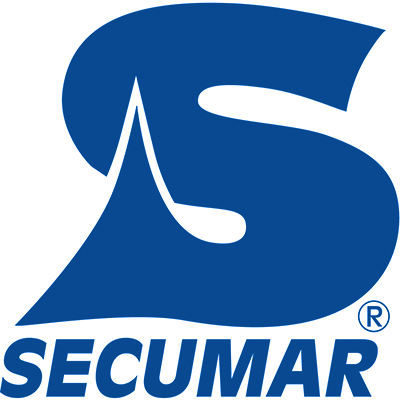
Yes! Each passenger may carry two lifejackets each with a maximum of two (2) CO₂ cartridges per lifejacket and no more than two spare cartridges in their luggage. Generally, there is no size limit for CO₂ cartridges in lifejackets. These rules are developed by the “Dangerous Goods Panel” of the ICAO, a sub-organization of the UN, and incorporated into the ICAO T.I. released regulations so they are valid worldwide. They are also included in the dangerous goods regulations (DGR) of the IATA. Unfortunately, some airlines incorporate size limits for CO₂ cartridges that may complicate travling with lifejackets.
Legal provisions for the transport of CO₂ cartridges in commercial aircraft
Basically, the requirements for the transport of CO₂ cartridges are regulated by law in the European Regulation (EU) 965/2012 in conjunction with the ICAO Technical Instructions for the Safe Transport of Dangerous Goods by Air (ICAO T.I.). The ICAO T.I. are published by the International Civil Aviation Organization (ICAO), a sub-organization of the UN. In it they set the maximum levels for dangerous goods carried by passengers or crew members and should be followed by the airlines worldwide.
The lifejacket regulations and maximum levels are given in Table 8-1, Article 18 of the ICAO T.I. 2023-2024. For “Small cartridges fitted into a self-inflating personal safety device such as a life-jacket or vest” apply from now on the following rules:
- A passenger may take two (2) inflatable lifejackets
- in or as checked baggage.
- in or as carry-on/hand luggage.
- The approval of the operator is required.
- Restrictions:
- no more than two (2) personal safety device per person;
- the personal safety device must be packed in such a manner
that it cannot be accidentally activated; - must be for inflation purposes;
- no more than two cartridges are fitted into the device; and
- no more than two spare cartridges.
IATA
The International Air Transport Association (IATA) is a federation in which most airline companies are members. The specifications of the ICAO T.I. are also reflected in the IATA regulations for dangerous goods (DGR).
In the IATA DGR Regulations, gas cartridges, small, non-flammable containing carbon dioxide or other suitable gas in Division 2.2 are allowed under the following conditions: Up to two (2) small cartridges fitted into a self-inflating personal safety device, intended to be worn by a person, such as a life jacket or vest. Not more than two (2) devices per passenger and up to two (2) spare small cartridges per device, not more than four (4) cartridges up to 50 mL water capacity for other devices.
However, the IATA DG regulations do not define small replacement cartridges. See the definition in Table 8-1, Article 18 of the ICAO T.I. 2023-2024.
The transport of inflatable lifejackets with CO₂ cartridges in worldwide passenger aviation is therefore generally. However the approval of the operator is still required.
Important NOTE
Both the Federal Police at Frankfurt Airport and various airlines such as Air FRANCE and Thomas Cook / CONDOR still apply the 50 mL restriction on CO₂ cartridges. They only allow CO₂ cartridges with a content of max. 28 g CO₂. Due to this false size limitation, no inflatable lifejackets other than children’s vests or 100N vests could be carried. This creates problems with air transport for certain airports and airlines.
The German aviation authority LBA recommends that this procedure be agreed upon when booking a flight with the respective airline. The airlines can refuse to take them, because there is no obligation to transport.
Responsibility of the airline and captain
Ultimately, it is up to each airline and finally each captain to decide whether he/she allows the passenger, as is their right. Depending on the current situation, for example, increased risk of terrorism, he can pronounce prohibitions as may the Federal Police as well.
What is the danger of an inflatable lifejacket?
Effectively, an inflatable lifejacket poses no threat to aircraft, crew or passengers, even from a 275N vest with a 60g CO₂ cartridge. Neither the CO₂ gas nor the size of the compressed gas cartridge are problematic. Even if it came to the very unlikely malfunctioning of an inflatable lifejacket, then the biggest problem would be that the suitcase bursts. Not more.
It should be noted that the ICAO T.I. even allows the carrying of avalanche backpacks, which contain a much larger compressed gas tank with a volume of up to 250 mL. In addition, these also contain a pyrotechnic trigger mechanism.
How should you proceed?
According to ICAO T.I. and IATA-DGR the regulations require the approval of the airline to carry lifejackets. In order to avoid as many stumbling points as possible in advance, you should contact the airline when booking the flight and point out the request to carry life jacket so this permission can be noted directly on the ticket so usually all discussions are dealt with before arriving at the airport. A reference to the entry on the ticket is sufficient. In individual cases, you will be asked to leave your suitcase at the bulky luggage counter so that it can be separately screened.
Our advice is that you always declare your inflatable lifejacket and CO₂ cartridges, hand in your luggage and not carry them as carry-on baggage. Put max. one additional replacement cartridge with and directly alongside the lifejacket so that they can be seen together if the bag is checked.
A carry-on is possible in most German airports such as Hamburg or Dusseldorf. However, especially in some foreign countries, the staff at the security check of the hand luggage are often poorly trained or informed and cannot discuss these regulations. As a result, CO₂ cartridges are removed from the hand luggage frequently. Therefore, you always check your lifejacket as luggage.
Additional Information
- ICAO T.I. 2023-2024, Table 8-1: Provisions concerning dangerous goods carried by passengers or crew members (German)
- IATA DGR: Provisions for Dangerous Goods Carried by Passengers or Crew (Subsection 2.3)
- Commission Regulation (EU) No 965/2012 of 5 October 2012 laying down technical requirements and administrative procedures related to air operations pursuant to Regulation (EC) No 216/2008 of the European Parliament and of the Council
- ICAO Guidance Document Doc 9284 – Infectious Substances. International Civil Aviation Organization Technical Instructions for the Safe Transport of Dangerous Good by Air, 2005-2006
Further Questions
If you have any further questions, please contact us by phone or email. We will try to advise you in the best possible way in advance of your flight.
Tel.: +49 (4103) 125-0

